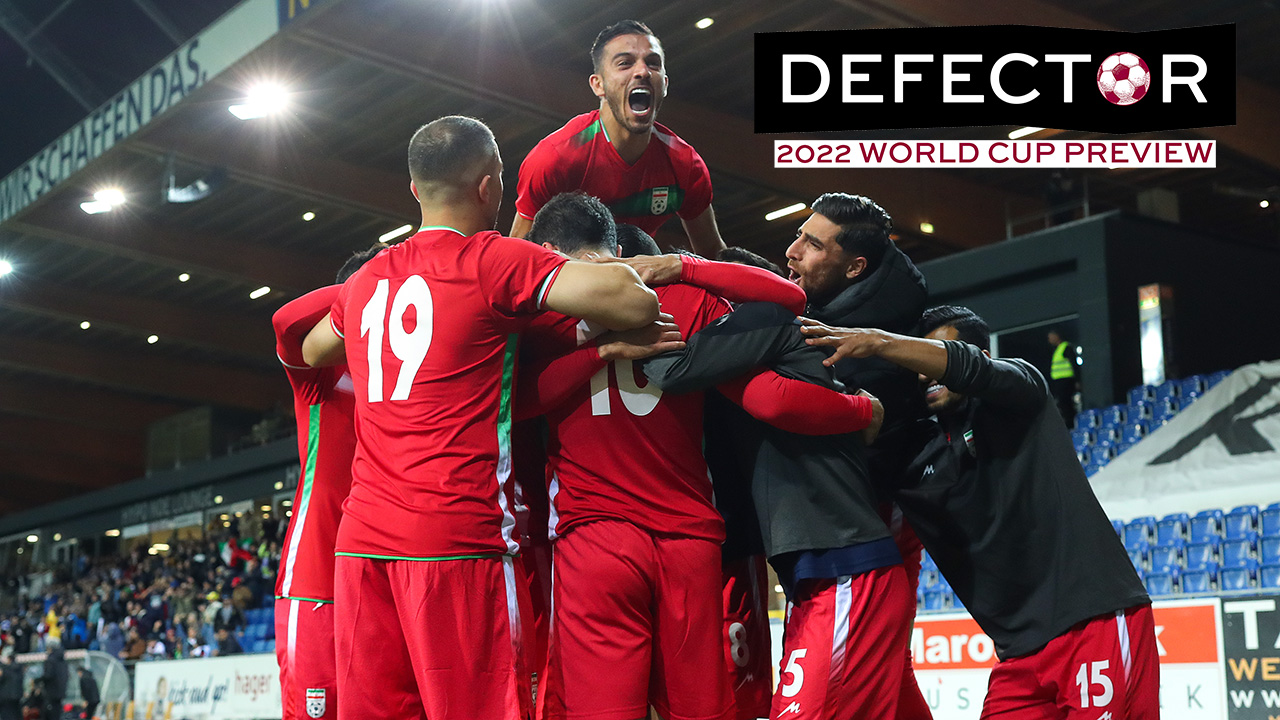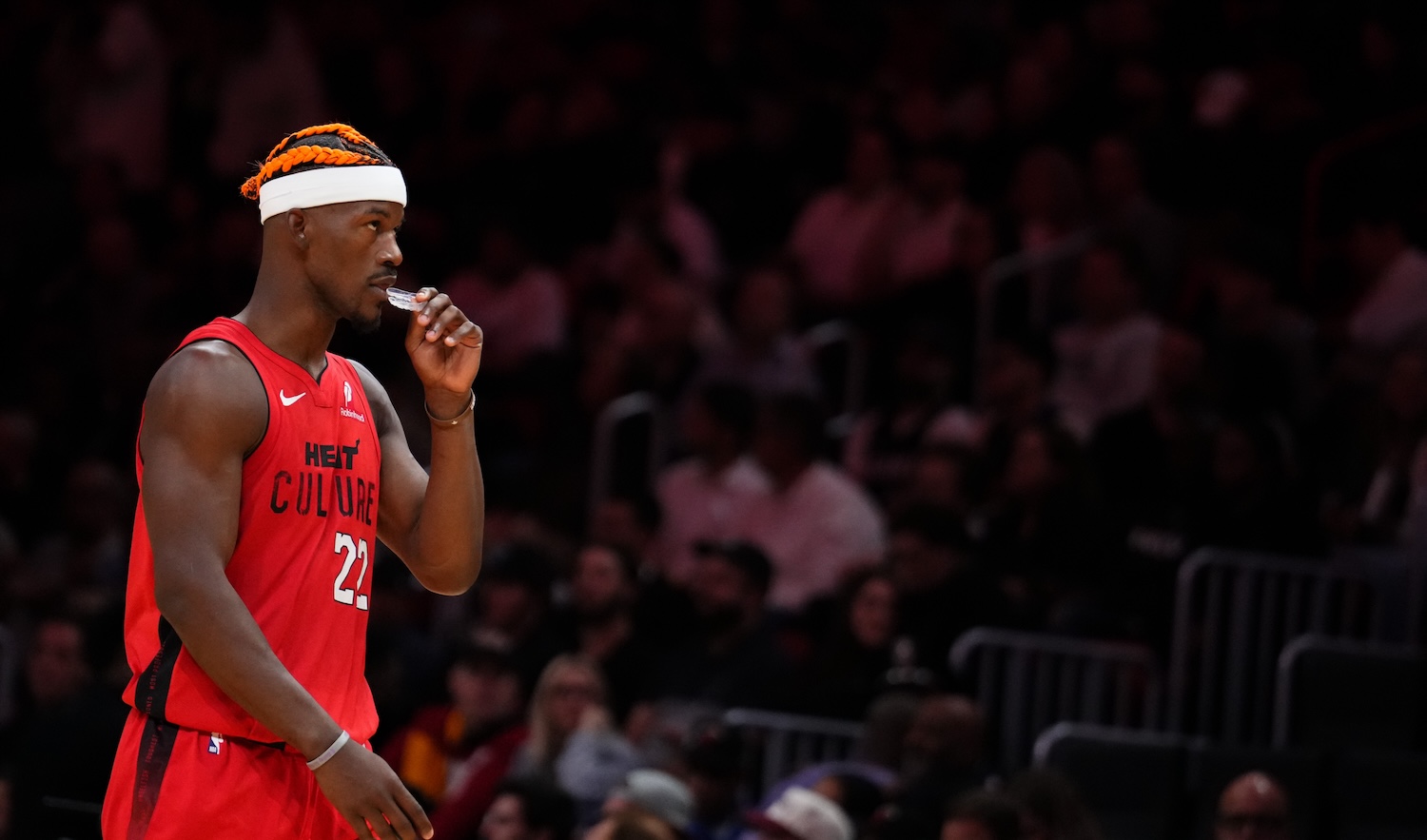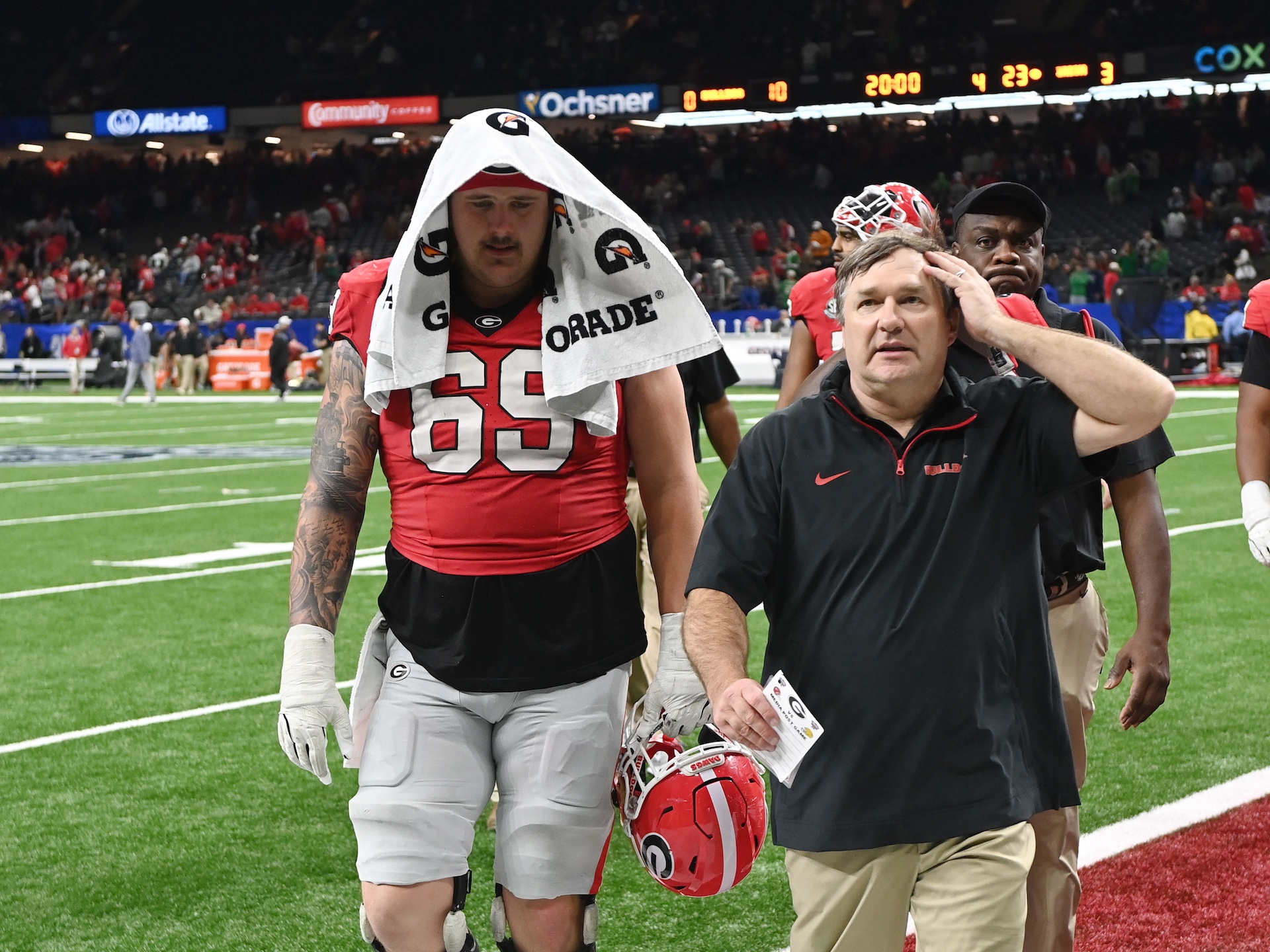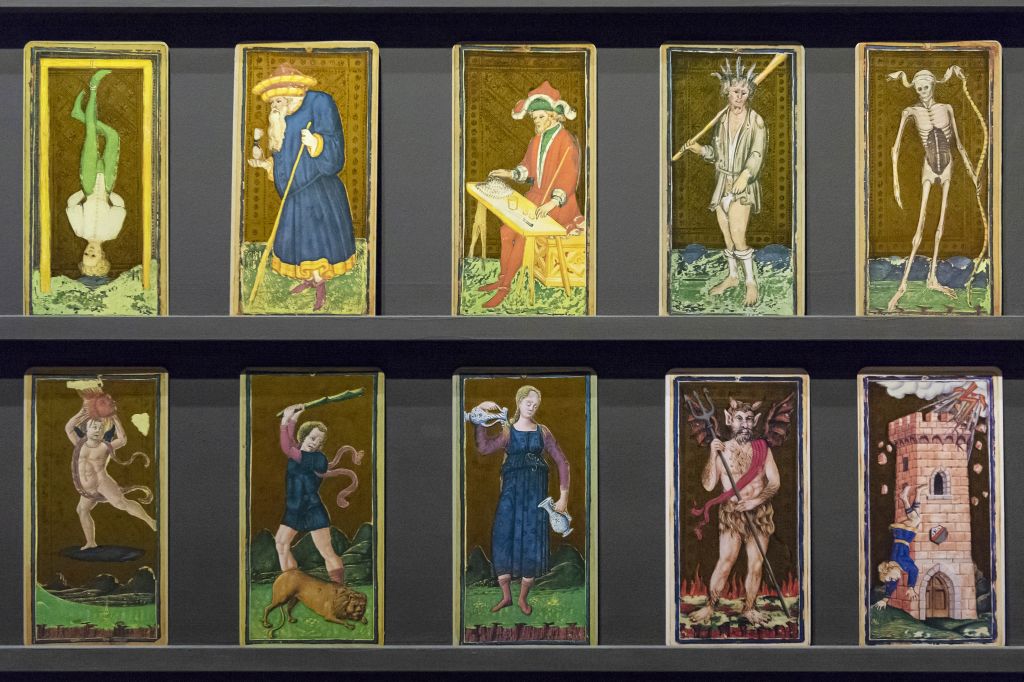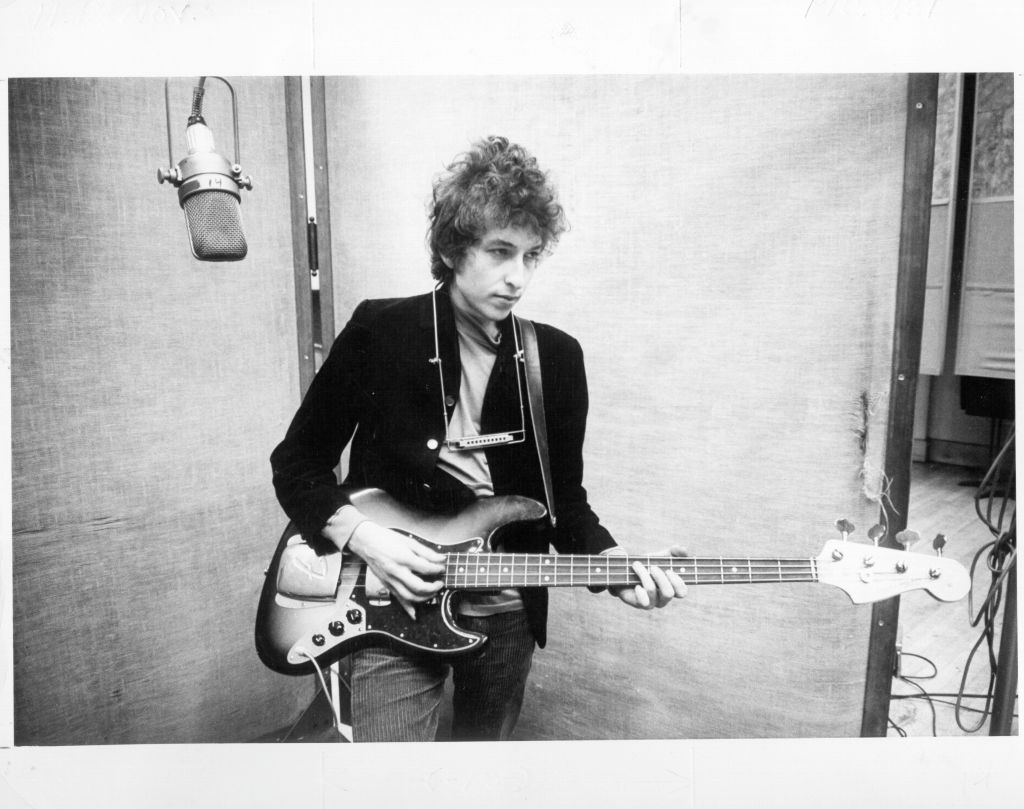It’s almost time for the 2022 World Cup. To help get you ready, we will be providing you with precious information about every team in the tournament. You can read all of our World Cup previews here.
When the World Cup draw was finalized back in April, Iran looked to have drawn one of the shortest sticks in the competition. Despite finishing with the most points in the final round of Asian qualifying for the tournament, Iran found itself in a group with England (coming off a runner-up run in the Euros), the United States (looking like a real team after missing the 2018 edition), and the winner of the Wales-Ukraine UEFA playoff (it ended up being Wales, which has Gareth Bale).
Immediately, two thoughts came to mind. The first is that this group is a mess geopolitically, what with Iran facing England and especially the U.S., and Wales in the same group as England for some United Kingdom spice. The second, more relevant thought was that while Iran may appear to be the minnow of the bunch, a closer look reveals that Iran is no pushover.
Really, one need only look at the 2018 World Cup to see how painful Iran can make life for opponents. In that group, Team Melli beat favored Morocco 1–0 in the opening game, played Spain tough in a 1–0 defeat, and then snatched a very late draw against Portugal. Though Iran didn't advance with its four points, it showed its mettle and gave Portugal, in particular, a scare in that final game. A similar path could happen this time around, especially since Iran gets the England game out of the way first. Could the team snatch enough points off the U.S. and Wales to advance? It's absolutely possible.
Iran is going to play the way underdogs often do at the World Cup, which isn't necessarily a death sentence. While viewers can expect some dull and defensive games when Iran is involved, the team has enough attackers to strike in the few chances that it will create. (There is a problem here, unfortunately for Iran: Bayer Leverkusen's Sardar Azmoun tore his calf in early October, and will likely miss the tournament, robbing the team of one of its best weapons.) If any of its three group-mates underestimate that threat while trying to break down the Iranian defense, disaster could strike and Iran could shock everyone.
Of course, Iran is not coming into the World Cup in the most tranquil of moments. First, its manager Dragan Skocic was fired in July, after leading the team through its qualifying campaign with relative ease. In came Portuguese boss Carlos Queiroz, who managed Iran in the 2018 World Cup. His defensive proclivities seem to fit what Iran is deploying on the field, though, so maybe the late change, just four months before the tournament, will pay dividends for Iran.
The bigger issue, and one which I will get more into below, is that Iran, the country, is currently aflame with protests against the current government. The "stick to sports" crowd will be sick to learn that the Iranian players have not been quiet about this, and in fact enter the World Cup, carefully, talking about the situation at home. This will likely go one of two ways: It could be a distraction, or it could be a rallying point for a team that is currently celebrated in the country by pretty much everyone outside of the government and its supporters. Regardless of how the results bear out, these Iranian players, going to this World Cup at this moment in time, will be important for their compatriots in the country, and it would likely be one of the World Cup's great stories if the team manages to subvert expectations and advance to the knockout stages.
Who Is Their Main Guy?
Porto striker Mehdi Taremi is peaking at the right time. After a 20-goal and 12-assist season last year for the Portuguese giants, Taremi has kept his form up to start the 2022–23 season, notching five goals and four assists in league play, while adding four goals and two assists in Porto's Champions League campaign to date. He especially tormented Bayer Leverkusen across both games in group B play, assisting both goals in a 2–0 home win before scoring two of his own in a 3–0 demolition in Germany a week later.
Taremi isn't the fastest striker in the world, but he's got great size and strength to serve as a more traditional target man for Porto. He's also great with the ball at his feet, whether he's shooting on goal—something he does around four times a game, an impressive clip by any standard—or creating for his teammates; he averages about half an assist per contest, which is extremely impressive for pure No. 9. His relative lack of mobility shows up in his subpar dribbling, but he's got enough agility and positional awareness to get into open spaces around the opponent's box: Taremi averages over seven touches a game inside his opponent's penalty area.
For Iran, he will have to do more of the same, particularly given the team's lack of creativity with Azmoun likely out of the tournament. (That absence probably means Taremi will play in his natural central position, as opposed to his usage on the left wing for Iran when his counterpart is in the lineup.) He'll have to do it all for the Lions to have a shot at advancing, but his last year-plus in Portugal has proven that he can be the fulcrum of a great attack. As long as Queiroz doesn't ask him to be a speed demon in counter-attacks for his side, Taremi should be at the center of everything Iran does going forward.
Who Is Their Main Guy Who Won't Score Goals?
There's not a lot to love in Iran's squad beyond the attackers plying their trade in Europe, but the rest of the side will likely be more important for Iran's chances at a shock knockout round appearance. Queiroz has a handful of versatile defenders that he can deploy in a variety of positions. The most important of those is team captain Ehsan Hajsafi, who currently plays in Greece for AEK Athens. The left-back is the epitome of a workhorse, and he won't really blow anyone away with his attacking flair. What he does bring is a steady presence on the ball, allowing him to pick out key passes from out wide. His one-on-one defending isn't the best, though he can contribute to the team defense if Queiroz decides to deploy him in the midfield instead.
Hajsafi was part of the group Iran took to the 2018 World Cup, and held his own on the left side of defense against both Spain and Portugal. He'll hope to replicate that this time around, though he will face a tough challenge in all three games, particularly if Wales allows Gareth Bale to drift out wide to the right. Maybe more important, though, is the fact that Hajsafi can give Iran some creativity against sturdy sides. In a friendly against Senegal in September, he created the only shot on target, and subsequently the only goal, for Iran off a cross to Azmoun, allowing Iran to escape with a 1–1 draw against a World Cup side, despite an abysmal team performance in attack. (Hajsafi also had a goal-line clearance in that game after getting caught out on a Senegalese attacking move, so even when he messes up, he can correct his own errors.)
More of that in Qatar, and perhaps Iran can shed Queiroz's reputation for anti-football, all-defense tactics and score some goals from open play, something the team did not do in the 2018 World Cup.
Where's The Beef?
Which teams or players does Iran not like? Do Iran's players like each other? We investigate Iran's potential enemies.
It's easy to answer who Iran's potential rivalry opponents are, all of which have to do with geopolitics. Iran's biggest local rival is Saudi Arabia (it is unlikely that these two teams will play, though, given how the draw shook out), and the team would love to beat the U.S. and/or England for those same reasons. However, the biggest and most defining beef for the Iranian national team at this World Cup is actually one from within. To understand this one, it's important to do a quick current events lesson.
On September 16, 22-year-old Iranian woman Mahsa Amini died in custody, after she had been arrested by the country's religious morality police for wearing her hijab "inappropriately." Her death sparked a wave protests, with women taking off their headscarves in defiance of the current regime. The protests began in the capital of Tehran but have since spread throughout the country, with protestors denouncing the violent treatment of women in Iran. The police response has lead to dozens of deaths around the country, and it appears that there is no end in sight to the clashes between protestors and armed police.
The players on the Iranian team appear to mostly be pro-protests. Azmoun posted a defiant message on Instagram in September, writing after a national team match "Because of the restrictive laws placed on us in the national team I am not supposed to speak out… I know I risk being sent home, but I can't take it anymore! You will never be able to erase this from your conscience. Shame on you! You kill easily. Long live Iranian women!" The post was subsequently deleted, as was his entire Instagram account, before it reappeared with a new, much tamer statement. Claiming that he had not been coerced to delete his previous post, Azmoun apologized for what he had said:
"I have to apologize to the players of the national team because I caused my dear friends to be annoyed some supporters even insulted the national team. This was not fair in any way and it was my mistake. I blame myself and I am ashamed in front of all the members of the national team and the technical staff who caused the order and peace of the team to be disrupted"
Azmoun's statement implies that there was some friction inside the Iran team about his pro-protest message, though the extent of it is unclear. There's been some speculation that there is a contingent in the group that does not support the protests, or at the very least doesn't feel comfortable wading into political matters. Terami has sometimes been linked to this anti-protest group, though he has since posted on Instagram saying he was "ashamed" of how women were being treated in the country. There was also speculation that midfielder Mehdi Torabi, who has a history of supporting the regime, took a penalty in an Iranian league match earlier this month with the express purpose of revealing a pro-regime message on a shirt underneath his jersey. But he missed the spot-kick.
As a whole, the players have been careful with their messaging around the protests, especially in light of the police raid of former Iran star Ali Karimi's home, after the 43-year-old ex-Bayern Munich player voiced his support in no uncertain terms. During the pregame part of a match in late September, the team wore black jackets that covered the Iran emblem on their shirts, which was believed to be a sign of support for the protests. (Though two members of the national team denied that that was motivation.) It's a tricky thing for the current players to deal with, navigating tense, dangerous, divisive issues that stand to pit some of them against some of their countrymen, their government, those in charge of the national team, and maybe even against some of their own teammates.
Most Likely To Go David Ospina Or James Rodríguez Mode
Who is the Iran's best candidate for a breakout performance that earns them a career-changing transfer? Might this potential post-tournament transfer go well, like when Colombia's James Rodríguez went to Real Madrid after starring in the 2014 World Cup? Or could it go poorly, like when Colombia's David Ospina went to Arsenal after starring in the 2014 World Cup?
The most fitting candidate for this section was Azmoun, but since he is likely going to miss the World Cup, we'll go elsewhere. (If he makes a miraculous recovery, consider this section to be retroactively updated.) Instead of looking to Germany, let's move the focus to the Netherlands, where Alireza Jahanbakhsh plies his trade at Feyenoord. That name might sound familiar to Premier League fans, as the now-29-year-old Jahanbakhsh had a stint at Brighton Hove & Albion from 2018 to 2021. Those same Premier League fans might remember that he wasn't very good for the Seagulls, scoring only twice in 50 games.
This is what makes Jahanbakhsh a prime David Ospina candidate. He's got name recognition from his time in the world's biggest league, but he's not exactly a player worthy of a relatively big money move. His time in the Eredivisie hasn't gone much better than his time in England, and this season, he has failed to score domestically. (He does have two goals in the Europa League, but both came against Austria's Sturm Graz, no one's idea of tough competition.) Still, if he manages a couple of goals in group stage play for Iran, there will likely be a play for his signature from team's wanting to bring in an experienced hand in attack. There's a chance that this late-career move works out for Jahanbakhsh, but it seems more likely that a move would only reinforce why he was in and out of the Premier League with so little fanfare.
David Ospina Mode Probability Score: 80.6
James Rodriguez Mode Probability Score: 7.1
Fun Geographical Fact
Iran boasts the tallest volcano in Asia, a continent known for its high peaks. Mount Damavand, in the northern part of the country, measures at 18,406 feet, the third highest volcano in the Eastern Hemisphere and is the country's highest peak, period. It has not erupted since around 5300 B.C., but is considered a "potentially active" volcano, due to vents near the surface which emitted sulfur as recently as 2007.
Good Flag Or Bad Flag?
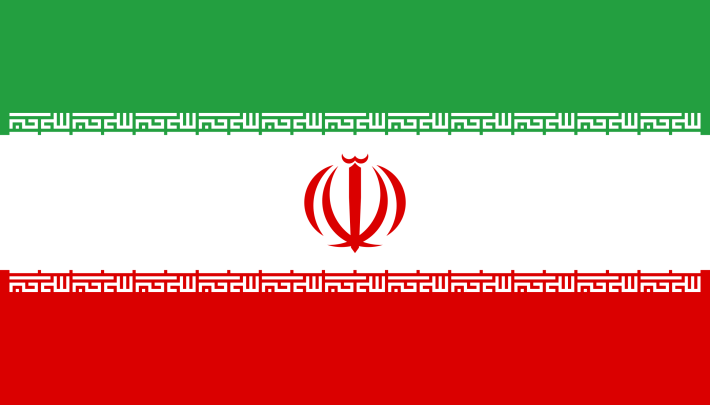
In terms of just visuals, this flag is a perfect, 10/10 artifact. The colors are great—representing the Islamic religion (green), peace (white), and courage (red)—and the Kufic script in the green and red sections looks awesome; it stands for Allahu Akbar (God is the greatest) and is repeated eleven times in each color.
However, the symbol in the middle is also a point of conflict within the country. The current symbol, representing Allah, was adopted in 1980 after the Iranian Revolution, and is closely associated with the current government. Dissidents and exiles instead prefer to either use the flag without the emblem in the middle, or with the Lion and Sun symbol which was in use before the revolution. That version of the flag loses the Kufic script, so it's a bit less interesting visually, but still pretty cool.
Good Anthem Or Bad Anthem?
Two conflicting factors make this a tough anthem to rate. The first is that it is very short, which is a good thing; no one wants to sit through a three-minute-plus anthem. The second, though, is that it is not that interesting musically. So, it's a mediocre anthem by the law of averages.
Notable Moment In World Cup History
In 1998, its second trip to the World Cup, Iran was drawn against European heavyweights Germany and Yugoslavia. This made its prospects of advancing past the group stage slim-to-none, but its third opponent provided a different kind of motivation. That's right, that's the United States' music. On June 21, 1998, the two teams faced off in Lyon, just three years after the American embargo of Iran started. The match was seen as a potential disaster for FIFA, given the two countries' antagonistic relationship to each other; as a maudlin FIFA documentary video years later said, there were over 150 armed police officers at the stadium, the most of any game at the tournament.
On the field, though, it was Iran's crowning achievement. The team, which was ranked 30th out of 32 teams in the tournament, completely dominated the Americans. Hamid Estili scored the opener in the 40th minute with a looping header, and Mehdi Mahdavikia doubled the Iranian lead in the 84th on a counter-attack. Though the U.S. got one back through Brian McBride in the 87th, Iran held on for first win in World Cup history, a feat they would not repeat until 2018 against Morocco.
How Can They Win The World Cup?
It's weird that a flu that only affected English speaking countries struck right as the World Cup started, but Iran didn't complain about advancing to the knockout rounds for the first time ever. Even weirder is that every other team got struck by lightning on the way to their respective games in the round of 16. With no available opponents for the mighty Iranians, FIFA had no choice but to award the trophy to the Lions. Congratulations, Iran!
